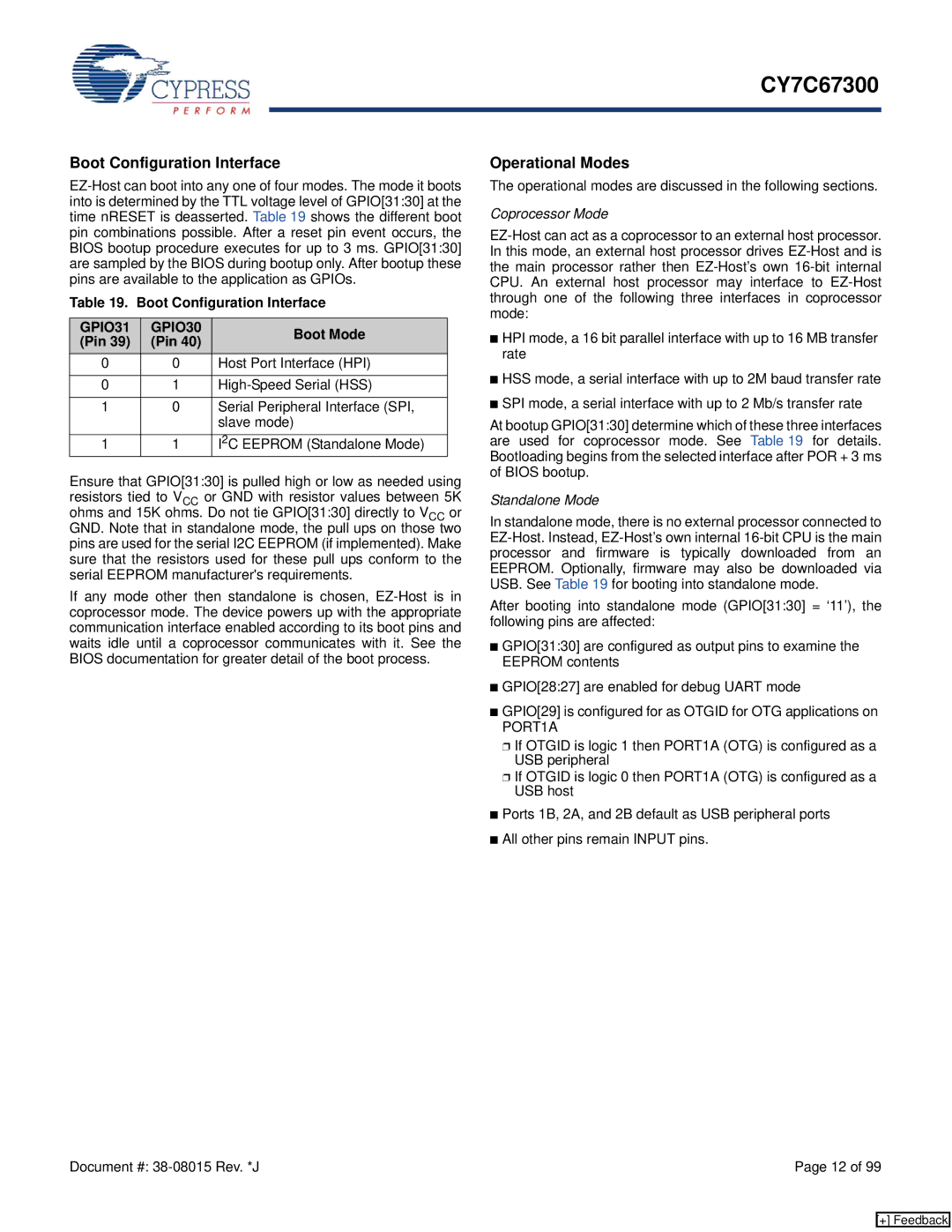
CY7C67300
Boot Configuration Interface
Table 19. Boot Configuration Interface
GPIO31 | GPIO30 | Boot Mode | |
(Pin 39) | (Pin 40) | ||
| |||
0 | 0 | Host Port Interface (HPI) | |
|
|
| |
0 | 1 | ||
|
|
| |
1 | 0 | Serial Peripheral Interface (SPI, | |
|
| slave mode) | |
1 | 1 | I2C EEPROM (Standalone Mode) |
Ensure that GPIO[31:30] is pulled high or low as needed using resistors tied to VCC or GND with resistor values between 5K ohms and 15K ohms. Do not tie GPIO[31:30] directly to VCC or GND. Note that in standalone mode, the pull ups on those two pins are used for the serial I2C EEPROM (if implemented). Make sure that the resistors used for these pull ups conform to the serial EEPROM manufacturer's requirements.
If any mode other then standalone is chosen,
Operational Modes
The operational modes are discussed in the following sections.
Coprocessor Mode
■HPI mode, a 16 bit parallel interface with up to 16 MB transfer rate
■HSS mode, a serial interface with up to 2M baud transfer rate
■SPI mode, a serial interface with up to 2 Mb/s transfer rate
At bootup GPIO[31:30] determine which of these three interfaces are used for coprocessor mode. See Table 19 for details. Bootloading begins from the selected interface after POR + 3 ms of BIOS bootup.
Standalone Mode
In standalone mode, there is no external processor connected to
After booting into standalone mode (GPIO[31:30] = ‘11’), the following pins are affected:
■GPIO[31:30] are configured as output pins to examine the EEPROM contents
■GPIO[28:27] are enabled for debug UART mode
■GPIO[29] is configured for as OTGID for OTG applications on
PORT1A
❐ If OTGID is logic 1 then PORT1A (OTG) is configured as a USB peripheral
❐ If OTGID is logic 0 then PORT1A (OTG) is configured as a USB host
■ Ports 1B, 2A, and 2B default as USB peripheral ports ■ All other pins remain INPUT pins.
Document #: | Page 12 of 99 |
[+] Feedback
